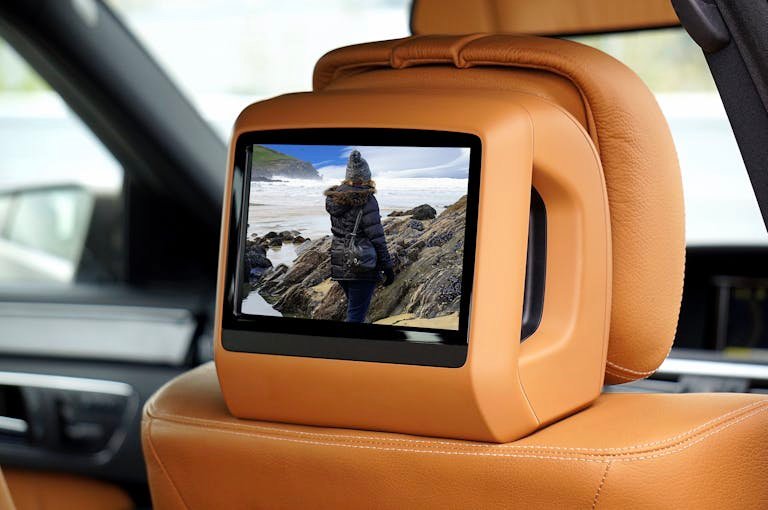Banish Mildew Car Odor Today!
The smell that comes with mold and mildew in your car can be quite nauseating and uncomfortable aside from being unhealthy. This is such a familiar issue that is rather often linked with the appearance of moisture, but fortunately, it is an issue that will require some work and an adequate solution approach. In this post, we’ll go through a comprehensive article on How To Get Mildew Smell Out Of Car Interiors and how not to let it happen again.
Steps To Get Mildew Smell Out Of Car
Step 1: Identify the Source and Address Moisture
Find the Culprit
To avoid the formation or eradicating of the stink, then one must first diagnose the root cause of that particular smell. Mildew also grows where there is too much moisture hence you should also look for where there is moisture infiltration, especially at the window or door seams, sunroof, or if there is a faulty air conditioning unit. It also calls for necessary actions to check for signs of dampness in the carpets and the upholstery or even any other corners that may harbor water. It may be in the form of a watermark, mold discoloration, or the feeling of dampness in certain areas of a room or the entire space.
Common Sources of Moisture
- Leaky Windows and Doors: Ensure you have a check on tight sealant around your windows and doors. A crack, which is thin as a thread, can open a door to a wall of water.
- Sunroof: Ensure that the following drains are not blocked; any of the drains connected to the sunroof.
- AC System: A common issue that could arise within an AC is the presence of moisture in the machine due to a faulty device. Most of the time, one should verify whether the fluids are clearing or not.
- Carpets and Upholstery: The smallest spillage of food or water can pus into the carpets and seats with ease leading to the growth of mildew.
Step 2: Dry it Out Completely
Using Sunlight and Ventilation
After attaining the root cause of moisture, the next step is ensuring the car is completely dried out.
- Park in Sunlight: Choose a warm and sunny day without humidity when you are going to experiment with your car parked outside.
- Open Windows and Doors: Ensure that all the windows and doors in the house are opened to allow as much air to circulate inside as possible.
- Remove Floor Mats and Seats: In so doing, perhaps, one can remove the floor mats and the damp car seats to air in any other place than in the car. This will ensure that they dry faster and effectively by avoiding contact with room air as much as possible.
Step 3: Deep Cleaning and Deodorizing
Thorough Vacuuming
A thorough vacuuming is crucial to remove any residual moisture and mildew spores.
- Use a HEPA Filter Vacuum: HEPA filter vacuums are excellent for trapping small particles like mold spores. Vacuum the carpets, upholstery, and every nook and cranny of your car.
- Pay Attention to Crevices: Make sure to get into crevices, seat folds, and under-seat areas where moisture can hide.
Using a Vinegar Solution
Vinegar is a natural disinfectant and is effective against mildew.
- Mixing the Solution: Mix equal parts white vinegar and water in a spray bottle.
- Application: Lightly mist the affected areas with the vinegar solution. Wipe with a microfiber cloth and let it air dry completely.
- Safety Note: Always test the vinegar solution on an inconspicuous area first to ensure it does not cause discoloration.
The Power of Steam Cleaning
For stubborn mildew or extensive areas, a steam cleaner can be highly effective.
- High Heat: Steam cleaners use high heat to kill mold spores and penetrate deep into fabrics.
- Caution: Be mindful when using steam on delicate upholstery or electronics. Refer to your car’s owner’s manual for guidance.
Baking Soda as a Deodorizer
Baking soda is another natural deodorizer that can help eliminate lingering odors.
- Sprinkling Baking Soda: Let it sit to allow the baking soda to work well and absorb any smell, then vacuum properly.
- Vacuum Thoroughly: After letting it sit, vacuum thoroughly to remove the baking soda and any absorbed odors.
Step 4: Ventilation of the Air Conditioning System
Replacing the Cabin Air Filter
A clogged cabin air filter can trap mold spores and odors, exacerbating the problem.
- New Filter: As recommended by the manufacturer, remove the old cabin air filter and place a new one.
Air Vent Treatments
If the mildew smell persists, it might be coming from the AC system.
- AC Vent Cleaning Products: One market suggestion is to use an AC vent cleaning product found at auto shops. These are products that are usually sprayed or used as foggers and their main aim is the vents and evaporator coils.
- Follow Instructions: Carefully follow the product instructions to ensure proper use.
Step 5: Preventative Measures
Moisture Control is Key
You should purchase moisture traps or small bags of silica gel to reduce humidity in your car, especially during rainy days. Silica gel packs or automotive moisture absorbers are very helpful to avoid moisture accumulation; they should be placed under seats or in the trunk.
Regular Cleaning
Clean up the car so that everything inside has to be vacuumed and the parts that get wet frequently have to be wiped to prevent the formation of mold. This way the mold does not have the opportunity to feed on the dirt and debris that may be present after the cleaning process.
Fresh Air Circulation
As much as possible, open the windows and air freshen the car especially after washing the car or after a rainy day. Proper ventilation also helps to reduce the levels of humidity inside a house thus denying the formation of mold.
Preventing Mildew Growth
Proper Ventilation
Maintaining good ventilation in your car is key to preventing mildew growth.
Using Sunlight and Fresh Air
Whenever possible, park your car in a sunny spot with the windows down slightly. This helps dry out any moisture and prevents mold from growing.
Keeping Windows Slightly Open
To prevent overheating, try rolling down your windows slightly when you are parked to allow fresh air and airflow to circulate, thereby also reducing the humidity level in the car.
Regular Maintenance
Staying on top of regular maintenance can make a big difference.
Cleaning Schedule
This entails cleaning by sweeping, wiping the floor or any other surface, as well as using other techniques such as baking soda or charcoal bags.
Using Dehumidifiers
Use of a car dehumidifier or moisture absorber to reduce the level of moisture in the car. Mold and mildew do not grow on these products and hence they can be used effectively.
Also Read: Google Shopping Ads Spy
Final Words
In the following steps, you will have an idea of how to deal with the problem of mildew smell in the car. Thus, by determining the source, removing humidity, cleaning up the car thoroughly, and also taking necessary precautions, you can make your car smell fresh again. Just bear in mind that the best way to solve problems related to dampness is to do it as early as possible and always follow the rule of frequent cleaning. This means that contracting regular maintenance services and being observant is essential to preventing your car from developing a foul smell due to the growth of mildew.







